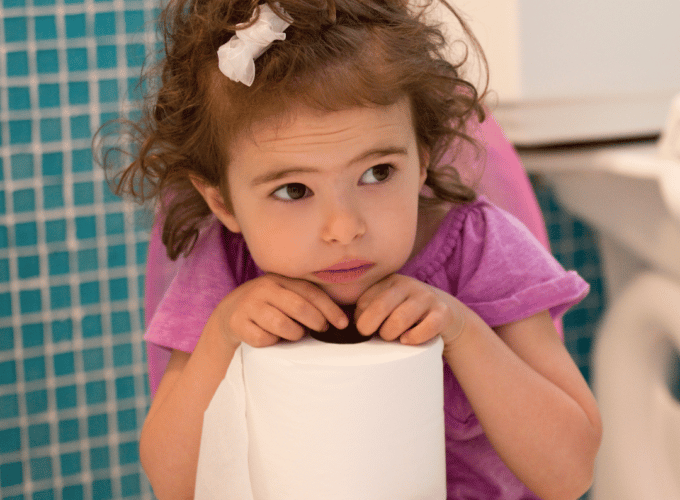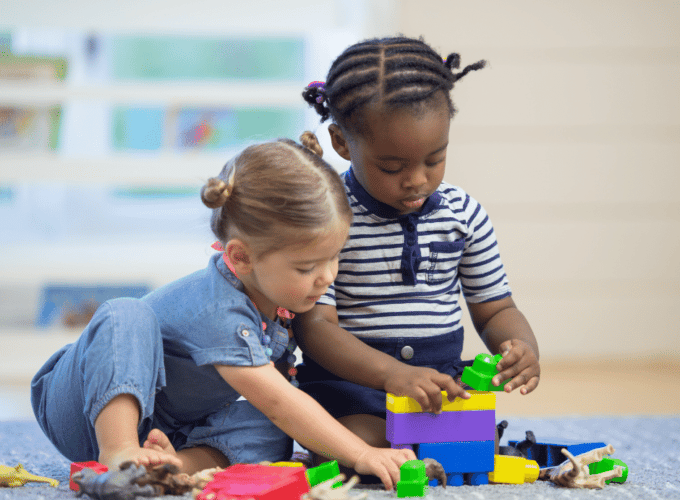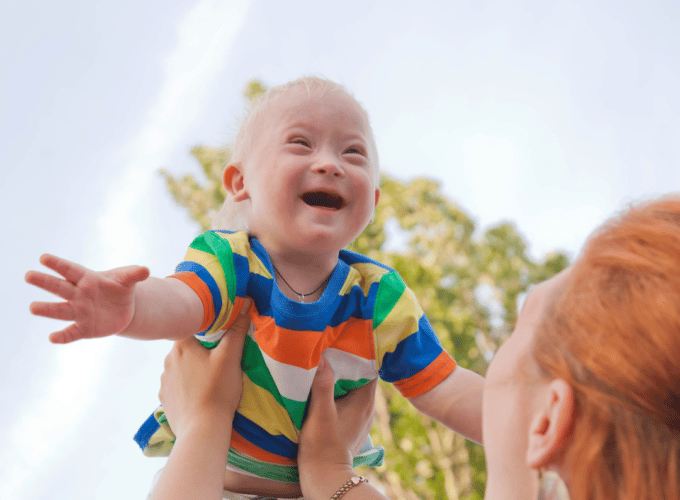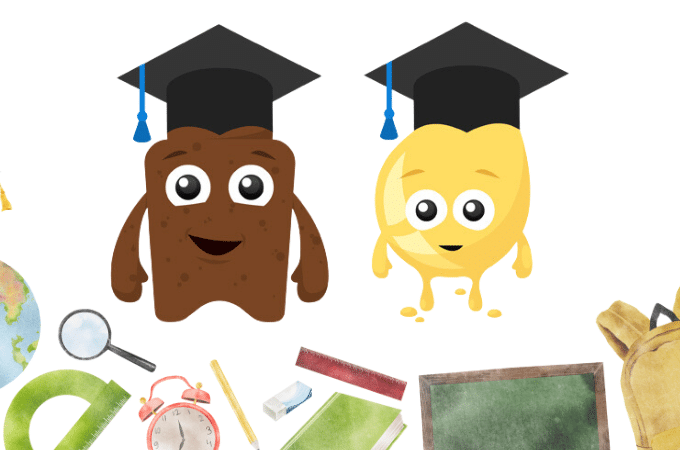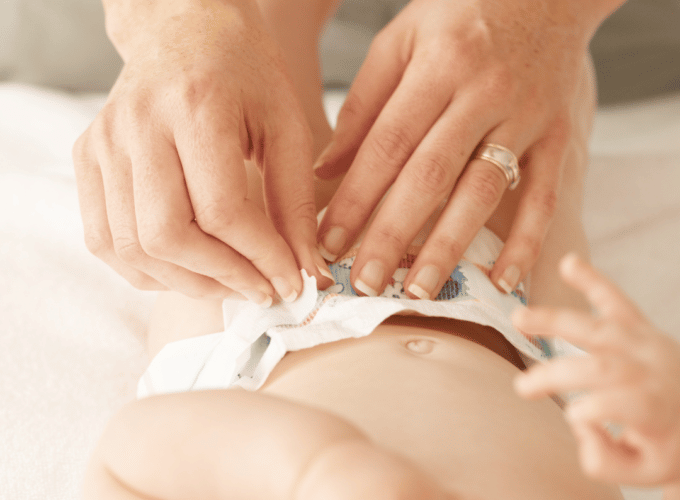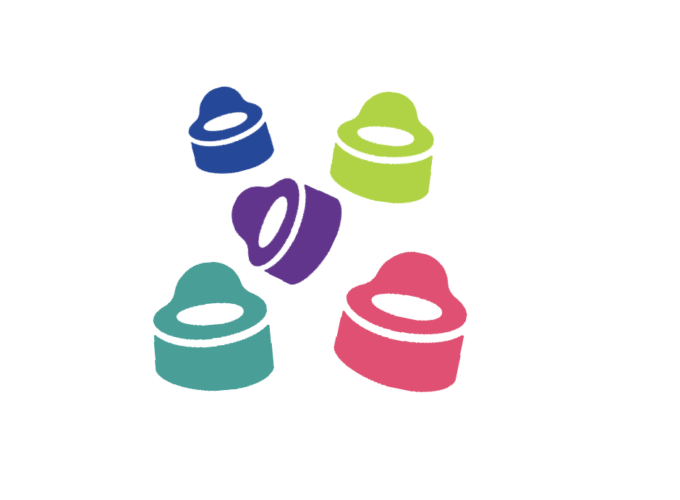Potty training: how to start & best age to potty train
Last Reviewed: September 2023
Learning how to use the potty independently and stopping wearing nappies is a big milestone for your child. There are lots of new and exciting skills for them to learn with your help.
To make this process easier for you both, follow our evidence-based 3 step Let's Go Potty approach.
It begins with preparation to use the potty, next is practising potty skills before eventually stopping using nappies as your child gains confidence.
Keep reading for answers to commonly asked questions about how to potty train including:
- The best age for potty training and when to start
- Tips for supporting children with additional needs
- The equipment you will need
- Removing night time nappies
- Common potty training problems and challenges
When should you start potty training?
Before they can start training, your child needs to be given lots of opportunities for learning. Babies are born ready to learn new skills with our help and the best way for them to do so is through practice and repetition.
That's why it's important to think about potty or toilet training in the same way we support children to develop other skills such as brushing their teeth or using a spoon.
Just like when helping them to walk and talk, you can start teaching your child to use a potty before they stop using nappies. This gives them all the time and practice they need to succeed with being independent from nappies when the time comes.
See potty training as a process rather than an event!
Shouldn't we wait for 'signs of readiness'?
No! Many children and particularly those with additional needs, will never give any signs that they are ready to potty or toilet train.
Very few children wake up one morning and announce they want to stop wearing a nappy! It's a bit like expecting a child to be able to run before they've had a chance to crawl.
You don't need to delay potty training and wait for signs of readiness. Prepare your child by teaching them the skills they need.
What is the best age for potty training?
Most children are ready to master potty independence and lead in many parts of the process from around 18 months. The majority of children will be capable of doing most things including wiping by themselves when they start school.
Research shows it is better for your child’s bladder and bowel health to stop using nappies between 18 and 30 months.
The longer you leave it, the harder it can be for your child to learn this new skill and accept not having a nappy on anymore.
How to prepare for potty training
The getting ready stage for potty training needs to start early, take time and be a gradual journey you go on together. It can help to think of it as a 'potty learning process' which will pay off in the long run.
Potty learning means helping your child use a potty or toilet as part of their overall learning. Most parents find a good time to start helping their child learn potty skills is from the time they can sit up, usually around 6 months.
By starting the process early and gently, when the time comes to stop wearing nappies, your child will already have some skills to make this transition easier and less daunting for you both.
It will be a lot less stressful for you both if you tackle potty training as a gradual process, rather than an event that can be completed in 3 days!
Why ‘potty learning’ helps
There are 40 different skills your baby needs to learn and put together to become potty trained. You don’t need to wait for them to be able to do all these skills on their own before you start helping prepare them.
Your child has a lot to learn at each stage. This is why it makes sense to do some preparation and practice together before they stop wearing nappies.
Benefits of a potty learning approach include:
- You don't need to wait until your child is ‘ready’ and able to do everything on their own before they can start potty learning.
- There's no need to wait until your child decides or even tells you they no longer want to wear nappies. Language is one of the very last skills of communication that children develop.
- Your child will already have some of the key skills they need to make the move to pants and potty easier when you stop using nappies.
- Helping your child learn as they go along, according to what they are capable of at each stage of development, gives them a gentle learning process towards stopping using nappies.
- The more practice and help your child gets, the easier it will be when you decide to stop using nappies.
Supporting children with additional needs
Almost all children can learn to be clean and dry. Children with special needs such as delayed speech, autism or a physical disability may find the process more challenging.
Children with an additional need often need more support with learning to use a potty or toilet, but we recommend following the same 3 step process: preparation, practice and then stopping using nappies.
The longer they wear nappies, the harder it may be to introduce a new place for them to wee and poo. Therefore, it's important not to put off potty training for too long.
What equipment is needed for potty training?
- A potty (more than one ideally). Choose one that is low to the ground so your child can use it independently. You don’t need to spend a lot of money on anything fancy, it has to do one job well: catch wee and poo!
- Some children may prefer to go straight to using the toilet. If this is your child, get a children’s toilet seat and a step stool to help them to feel secure and relaxed. Having feet firmly on the floor or a stool is the ideal position for fully emptying the bladder and bowel.
- A travel potty can be helpful when you and your child go out.
- Reusable cloth potty training pants are handy if you are travelling or when your child is at nursery. These are like underwear but with an absorbent layer to help soak up accidents which can be washed and used again.
- Using a nappy cloth will help your child to understand their body signals. By putting a cloth into your disposable nappy, you can give your child the opportunity to connect to what their body is doing. Being aware that they have weed is the first step to being aware of when they will need to wee.
You can find a wide range of useful potty training products in our online shop. All profits go back into supporting ERIC's work.
Step 1: Preparation
Here's how to help your child gain body awareness and prepare them for potty training:
- Check that they are passing some soft poo every day and there’s no underlying constipation. If you think your child might be constipated, it's important to sort this out before you stop using nappies. Read our information about how to spot and treat constipation.
- Make sure they are having plenty of water-based drinks on top of any milk. Keeping their bladder and bowel healthy and working properly will help with potty training.
- Try to change nappies or pull-ups as soon as they are wet or soiled. This teaches your baby that it is normal to be clean and dry.
- Once they can stand, do nappy or pull-up changes standing up and involve them in cleaning up and flushing poo down the toilet. Talk to them whilst you're doing it so they begin to understand where wee and poo goes and the language we use for the toilet and how our body feels.
- Regular, short periods without wearing a nappy or pull-up can help prepare your child for how it will feel when they stop using them completely. Let your child have some nappy off time for up to 30 minutes after they've done a wee or poo. This will help them get used to not wearing it, without having an accident.
- If you use disposable nappies or pull-ups, you can add a washable, reusable cloth flannel into it so that it feels wet when your child wees. This is because disposables instantly wick away the moisture, making it harder for your child to feel when they have done a wee. Make sure to remove the cloth as soon as it gets wet to avoid nappy rash.
Step 2: Practice
From the time your child can safely sit up by themselves, they can start sitting on a potty with your help.
Good times to try a potty sit include:
- Shortly after they wake up
- After mealtimes
- Anytime you know your child needs to go (if you see them straining for a poo for example).
Once you've helped to grow your child's body awareness and they begin to develop confidence in what they've learnt, you can then start to build in and give opportunities to practice some more advanced skills. These include:
- Words or signs that they can learn to help communicate their needs to you
- How to push their pants down and pull them up again afterwards
- Good personal hygiene: the correct way to use toilet paper for wiping, handwashing and drying
Don't forget at this practice stage they can still wear a nappy, but it will boost their capabilities and awareness if they have some nappy free time and potty sits.
Dress them in loose fitting trousers during these periods rather than pants as they may confuse this with wearing a nappy.
Why feeling comfortable using the potty or toilet is important
Teaching your child how to use a potty and feel comfortable around wee and poo gives them a gentle journey towards being independent from nappies. It also helps avoid many common potty training problems in the future.
Talking about wee and poo when you change them and letting them see you use the toilet gives your child the message that it's a normal part of life and nothing to be afraid of.
There may be times when it is more difficult for you to help your child use a potty or the toilet, for example if they are unwell or if they refuse to cooperate.
Try to stay calm and not put pressure on yourself or your child. It's fine to only do what feels manageable for you both - it's all part of their learning process. You don’t need to abandon potty practice, just pause until your child is feeling better or more willing.
Keep the potty around, and talk about wee and poo when you're changing nappies.
Helping your child to learn through play
Using play can help teach your child what you expect as well as motivate them. You can use stories, characters and toys to explain to your child what they need to do and teach them how to do it.
For example:
- Have a favourite doll or toy pretend to use the potty
- Use books and pictures to show how things work
- Help your child add some stickers to their potty to make it their own
- Set aside some toys or books that they only look at when on the potty or toilet
Step 3: Stopping using nappies
Whatever stage your child is on their potty learning journey, stopping using nappies is a big change for them.
Here are some tips to help make this stage easier for you both:
- Make sure it’s a good time for you as well as your child. It’s best to avoid doing it at a time when there are any big changes or disruptions to your child’s or family’s routine.
- When you are ready, tell your child it is time to stop using nappies. You may like to help your child to say goodbye to their nappies and explain that from now on, they will do all their wee and poo in the potty or toilet.
- Make sure your child is drinking enough during the day. Aim for 6-8 drinks a day. Water is the best drink but milk in moderation and well-diluted squash is OK too.
- Dress your child in clothes that are easy for them to get on and off, so they can take the lead with using the potty. Some children learn best when they can be at home and naked from the waist down. Other children learn best when they are wearing loose-fitting trousers without pants.
- If you have a boy, encourage him to sit down on the potty for both wees and poos especially in the beginning. We empty our bladder better sitting down and it helps to prevent constipation.
Signs your child may need to wee or poo:
- They may tell you
- They may fidget, go quiet or hide
- They may crouch down and start to strain (for a poo)
If you see any of these signs or you know your child needs to do a wee or poo, gently direct them to use the potty.
This will increase their chance of success whilst they are still learning how to respond to their body’s wee and poo signals. Doing this helps your child to understand what is expected of them.
Nap times
Once your child has stopped using nappies in the daytime, it’s time to think about nap times.
Learning to sleep without a nappy on at naptime and use the potty when they wake up, will help prepare your child for being dry at night.
Tips for managing nappy-free nap times:
- Just before nap time, help your child use the potty or toilet, so they are more likely to stay dry.
- When you notice the nappy is staying dry at least some of the time, stop using a nappy at nap time.
- Accidents are common during the first few months. Use a waterproof sheet or similar underneath your child, to protect their sleep area.
- Lots of children need to use the potty when they wake so help them to do this.
Using praise and rewards to motivate your child
Research shows that rewards such as sweets or sticker charts may help your child initially, but they can stop working quickly.
For most children, encouraging and supporting them to be as independent as possible is the best way to motivate them.
Tips for keeping your child motivated:
- Give your child plenty of encouragement and praise their efforts. When your child uses the potty or manages to stay dry, even if it's just for a short time, tell them how pleased you are.
- Try to stay calm when accidents happen and do not make a big fuss.
- Give your child the opportunity to do things for themselves as far as possible. This will help them to feel in control, positive and relaxed about the process.
- Use favourite toys, books or songs to help them feel comfortable on the potty.
- Try to avoid prompting or asking your child too often. Instead, wait until you think they need to go and then direct them gently, e.g. “it’s toilet time” or “let’s get that wee/poo in the potty!”
- Be clear, confident and consistent so your child knows what you are asking them to do.
Managing potty training accidents
It is normal to have lots of accidents at the beginning and they are an important part of the learning process. This is a big step for your child, so be patient and encourage them.
Tips for managing accidents:
- When your child has an accident, clean it up together and remind them to use the potty next time.
- Do not shame or punish your child about accidents, as stress and upset can make it harder for you and your child to learn together.
- It’s important not to pretend an accident hasn’t happened. Help them get clean and dry as soon as possible and involve your child in this process. Gently explain that you want them to use the potty next time.
Potty training out and about
When you first stop using nappies, choose a time when you can stay home with your child for a few days, so you can do some one to one learning with them.
Tips to make your first trips out easier to manage:
- Don’t forget your potty and spares of everything just in case!
- Make trips out short to begin with.
- Dress your child in clothes that are easy for them to push down and pull up again.
- Avoid putting your child back in a pull up or nappy for outings. This will confuse them and undo all that learning.
- A travel potty and washable car seat cover can come in handy.
- Using the toilet away from home is a good thing for your child to get used to. Talk to them about things like how the flush at the supermarket is different from the one at home or nursery for example.
Potty training at nursery & pre-school
Many children spend part of their day being looked after by someone other than you and away from home.
For potty training to go well, your child needs a consistent approach to help them learn what they need to do whether they're at home or in childcare.
- As soon as your child starts attending the setting, communicate about their bladder and bowel health. Ask the staff to tell you about the child’s poos, so you can keep track and avoid constipation.
- Find out what they are offered to drink to you can supplement appropriately at the beginning and end of the session. If the setting will only offer water, and your child is reluctant to consume enough water, talk to staff. Offer to supply juice or squash for them to dilute; it is vital for your child to stay well hydrated when they are away from home.
- Start conversations about potty practice as soon as your child can sit up. Settings may regard potty training as something to attempt when the child is older; share this information so they too can see the benefits of potty practice.
- When you are thinking about stopping using nappies, plan with the staff. Agree dates together with your child’s caregivers so everyone is ready to support them. Time what you are doing at home to fit in with the setting.
- Avoid starting to wear pants when the child is about to change rooms at nursery – that will be a big enough upheaval for them.
- Tell the staff about the language you use at home for wee and poo.
- Talk to the staff at the beginning and end of each session so everyone knows how things are going both at the setting and back at home. Use our potty training record so staff can keep track of their progress.
More information and free resources for childcare settings to support potty learning.
Getting dry at night
The age at which children become dry at night varies hugely. For some, it follows on quite quickly after achieving daytime dryness. For others, the wetting carries on after the age of 5 and treatment will be advised.
It is not your child’s fault if they wet during sleep.
There are however lots of things you can do to gradually work towards night time dryness including:
- Help your child get into the habit of using the potty or toilet at bedtime.
- As well as making sure they are drinking plenty during the daytime, work on a good bedtime drinking routine as well. STOP drinks one hour before bedtime, every night, and no more after that till morning. Our Wee Checker has information on how much children should drink for their age.
- Prepare your child for sleep. Unwind with a book or listen to music with the lights turned low. NO screens – so no TV, iPad, computer games in the hour before sleep, or the brain will get the wrong message!
- Avoid lifting – in other words waking your child to take them to the toilet – if you want to work on stopping bedwetting. It might keep the bed dry, but it encourages the child to wee during sleep as they don’t really wake up.
If your child is still wetting the bed when they are 5, see our Advice for Children with Night Time Wetting factsheet for more information and help.
Common potty training problems
Taking your time leading your child through the preparation and practice stages should help to avoid the most common potty training problems.
If you feel as though it's all gone wrong and they're just not getting it, it's ok to stop, go back to the preparation stage and start again.
Could they be constipated?
Constipation affects 1 in 3 children and is especially common in under 5s. Your child may be struggling because they have some underlying constipation that was there before you started potty training.
So stop, treat the constipation and then try stopping the nappies again once it is all under control. Carry on with potty practice – this in itself is an important part of constipation treatment.
Are they drinking enough?
Sometime the bladder misbehaves and we realise that our child is simply not drinking enough.
Once again, you don’t have to go right back to the beginning, but go back to the potty practice stage while you increase your child’s fluid intake.
Try not to panic if it seems as if they just aren't getting it. Some children take longer to learn, and just need more time.
Reassure your child that their wees and poos will learn to go in the potty, they just need more practice!
Get more information and help with common potty training problems.
FAQs
Which type of nappies should we use to best fit our lifestyle?
How long should potty training take?
What is the 3 day potty training method?
What is the best method for potty training?
Should we wait for signs of readiness before beginning potty training?
How often should you put your toddler on the potty?
Will 'lifting' my child to do a dream wee help them get dry at night?
Will it harm my baby if I sit them on the potty?
Resources
- All
- For staff
- Books
- Kid's stuff
- Factsheets
- Podcasts
- Potty Training
- Fun Stuff
- Useful products
- Videos
More information
Discover more about the causes and solutions for common potty training problems.
Information and resources for nurseries and preschools to support children and their parents with potty training.
Nearly all children can learn to be clean and dry. Get information, advice and support to help your child reach this milestone.
Find out how to prepare your child fto use toilets independently and get support from school with toileting problems.
The colour, consistency and frequency of your baby’s poo can tell you a lot about their general health and development.
Our 3 Step Go Potty method is based on research and evidence. We are passionate about supporting carers of young children with potty training.
Upcoming events
Share this page

